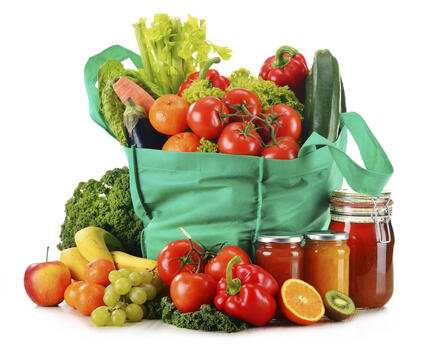What is your food doing for you? Is it fighting for you or is it fighting against you? We often make fun of the party-goer who sticks by the vegetable tray and intentionally avoids the wings. We try to persuade the guy who piles his plate at the potluck with the grilled chicken and veggies to have a little fun and eat dessert. Most of us see food as either making us fat or helping us lose weight. We see ‘bad’ foods as those that are high in fat and calories. Good foods are those that taste like rabbit food or cardboard, but will help us lose weight. Healthy seems to be synonymous with weight loss. And to a degree it is. But what most people do not realize is – healthy eating goes way beyond dieting and watching the scale. Those ‘health foods’ aka fruits and vegetables also contain a wide variety of vitamins and minerals, phytonutrients and antioxidants that could actually help you lose the weight you want, give you energy that you feel you should have, and/or clear your foggy brain. Many Americans are overweight, yet malnourished. We can’t escape our addiction to the unhealthy food that feeds our emotions and pacifies our taste buds. We fill our pantries with chips and cookies and our fridge with soda – all empty calories that end up hurting us on the inside way more than they do on the outside. This junk food does not provide the vitamins and minerals that our bodies need to function and over time, our bodies react from the inflammation that processed, unhealthy food creates in our bodies.
 Answer these questions:
Answer these questions:
- Do you suffer from headaches?
- Do you have joint pain or arthritis?
- Do you have skin problems like eczema?
- Are you tired more often than you think you should be?
- Do you have digestion issues?
What if you went to the doctor and instead of prescribing a drug, he wrote, ‘Eat 1oz of walnuts every day’. Would you be mad? Would you move to another doctor that would shell out pills? What if we spent the money we use towards drugs on better food choices instead? I’m going to guess it would be cheaper in the long run and a lot less physically impairing.
Consider your diet as a contributor to your symptoms or maybe even the root cause of your condition. If you were to discover the cure for your illness, wouldn’t you jump on board? What if the answer was as easy as the food you eat?
Understand that supplements do not contain all of the phytonutrients and antioxidants that real food contains. Are they a bad thing? No. They may contain vitamins and minerals, but not the huge network of these phytonutrients and antioxidants that are the major ‘supporting actors’ making the movie a blockbuster, not just a great movie. Take a look at the examples of super foods below and how they fight for your health.
- Broccoli: Besides Vitamin C, fiber, and B Vitamins, broccoli contains lutein, sulforaphane, carotenoids, kaempferol, glucoraphanin, gluconasturtiin, and glucobrassicin. Big words here equals big rewards for your body. These strange words are phytonutrients and antioxidants that help your body fight off cell damage that could lead to cancer. They get rid of toxins that threaten inflammation and damage to tissues, protect your eyes from degenerating, and protect against inflammation to joints associated with osteoarthritis.
- Walnuts : contain the amino acid L-arginine and the omega – 3 fat, alpha-linolenic acid, both of which help in the prevention of heart disease. ALA works to prevent blood clots and helps maintain healthy cholesterol levels. Walnuts also contain quinone juglone, the tannin tellimagrandin, and the flavonol morin. Pronunciation please! What I can tell you – these antioxidants prevent cell damage and liver damage. Walnuts also contain Vitamin E, folate, and melatonin to support optimal brain health. Shall we say better memory?
These are just two examples. Blueberries, kale, wild caught salmon, dark chocolate (72% or higher cocoa content), and beans are other examples of super foods that help your body fight inflammation and work at its finest. Now, compare these to the ingredients of the foods you eat. Do you see ingredients like monosodium glutamate, partially hydrogenated oil, sodium benzoate, red 40 or other dye colors, or acesulfame potassium in the foods that fill your plate? All of these have been speculated as harmful to our bodies , not helpful.
Questions to ask yourself at the end of the day:
- Did you fill your body with disease and inflammation fighting foods or did you fill it with more foods that create inflammation and disease?
- Are there foods that could help you in your fight against arthritis, high cholesterol, diabetes, chronic fatigue, etc? What are they and how do I fit them into my diet?
It’s time to see food differently. Food can be your functional friend. Healthy food equals a better functioning body, mind, and spirit. It’s worth the investment.
For tips from our registered dietitians, follow #NIFSNutrition on Twitter!

